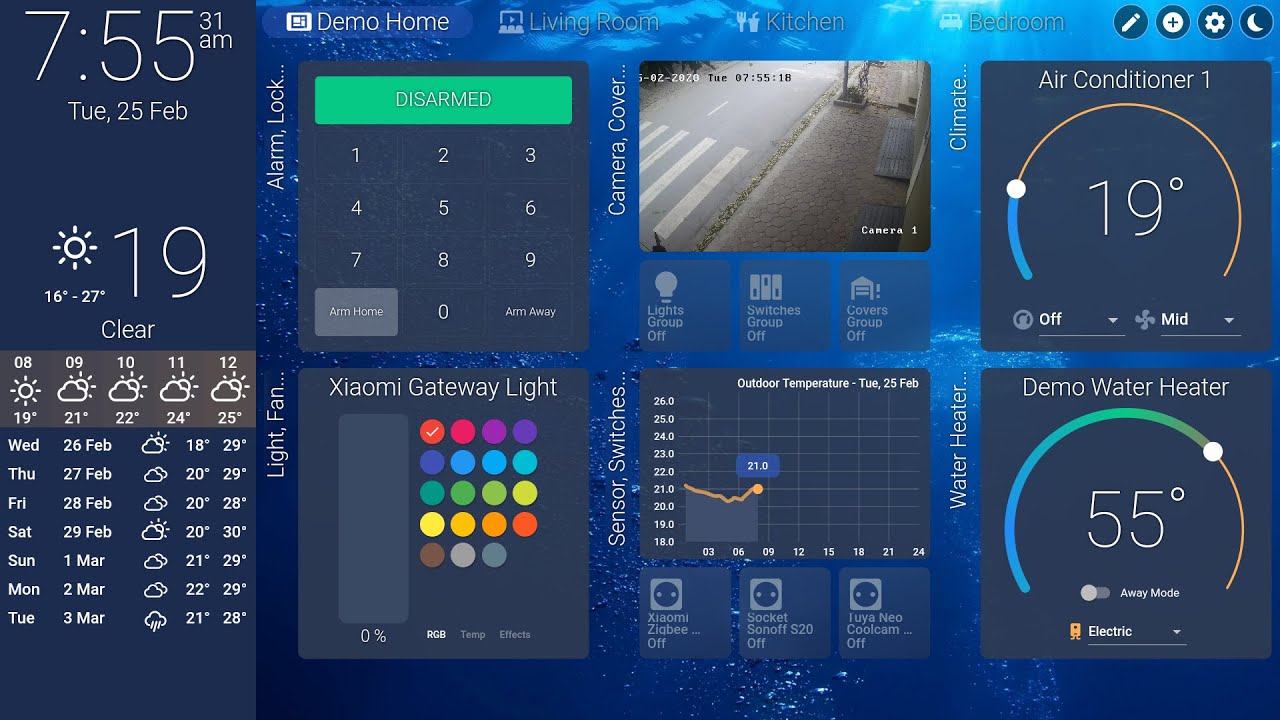Home Assistant is an open-source home automation software that allows you to centralise and control all connected devices and services in your house. With Home Assistant, you can create automations for your home, monitor its real-time status, and control your devices remotely.
Home Assistant is compatible with many communication protocols, devices, and services such as Google Assistant, Amazon Alexa, Nest, Philips Hue, and many others. You can easily add new devices and services using Home Assistant’s built-in “Marketplace.”
One of the greatest strengths of Home Assistant is its active and constantly growing community. You can find help and support on the online community forums, where many users share their configurations and automations. There are also numerous tutorials and guides available to help you get started with Home Assistant.
Home Assistant is also highly customisable. You can adjust the appearance of the interface by using pre-built themes or by creating your own. Additionally, you can create custom views to display your home’s status in the form of dashboards, widgets, and graphs.
In summary, Home Assistant is an excellent open-source home automation solution that allows you to centralise and control all the connected devices and services in your home. Thanks to its compatibility with a wide range of devices and services, along with its active and growing community, Home Assistant is a solid choice for anyone looking to build a smart home.
This serves as a good introduction to Home Assistant. I’ve been using it for over a year and have already accomplished quite a lot with it. You’ll find plenty of posts here: notes, impressions, feedback, and much more.
A good start for a blog post!

